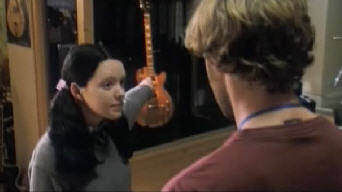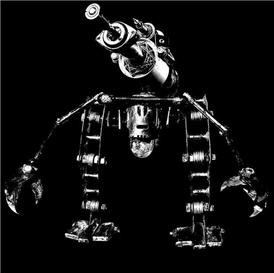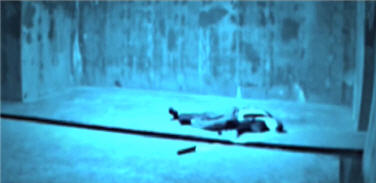Even among the other stunning shorts in the Little Minx Exquisite Corpse series, Phillip Van’s “And She Stares Longingly At What She Has Lost” stands out. Hypnotic, texturally gorgeous, and quite devastating, She Stares is the clearly the work of a massive young talent. Van graciously answered our questions about his fascinating background, artistic process, and experience in the LMEC project.
Crackle: What’s your background—how did you start making movies?
Phillip Van: I grew up multi-culturally. I’m Vietnamese and Greek-American. As a kid I could weigh western experience against eastern influence. That was a privilege, I later realized. My father drove a cab for 20 years. In a predominantly white school and neighborhood, I was a perennial outsider. I looked different, I liked art and I didn’t play football.
When I bought something, a shirt, a pair of shoes, that was my one version of that thing, usually for a while, until I wore it out.
I also economized differently. I didn’t grow up wasting and I couldn’t really understand it. When your resources are scarce, everything has meaning. I make all my films like this. I don’t waste time, I don’t shoot much coverage. And I only feel like they’re mine when every shot is intended and fits into the meaning of the greater whole.
When I was 10, my mom bought a Sharp camcorder, the big kind that took full-sized VHS tapes. I would use it to shoot narratives around the house and do in-camera editing and tricks. It was a passion of mine and it taught me how to think and compose stories visually.
I went to college knowing that I wanted to tell stories and that I needed an outlet for visual expression. I became an English major at Cornell and began writing for ABC Entertainment. Through this gig I got to meet and interview all my film icons, acclaimed directors and actors I grew up watching. Before I turned twenty I began to develop an understanding of the industry from their perspective.
I also began shooting a lot of shorts and commercial spots around New York as a cinematographer while in grad school at NYU. These projects taught me things, namely what not to do as a director. I wanted to get inside the material and tell stories in ways the directors often didn’t or couldn’t.
I used my visual and narrative desires as a guide to my own writing and directing and I made a couple of shorts that ended up winning a number of festival awards, including an award at Berlin and a Student Academy Award. This caught people’s attention and put me in a position to work full-time as a director, or really to continue doing what I’ve always been compelled to do.
Crackle: How did you become part of the Little Minx Exquisite Corpse project?
PV: My producer and manager Rhea Scott asked me to do the final film in the series. She thought that the Exquisite Corpse concept would suit my sensibilities and vise-versa.
Coming from a shorts background, I think I have an eye for story structure in unconventional time signatures, which can either be scaled up to feature-size or down to spots and vids. I have less commercial work to my credit than the other directors in the series, and it’s not the world I come from. I’m first a storyteller and I work to tell the best story I can in the time I’m given.
Crackle: It’s a truism that artistic constraints can be liberating. Did you find the constraints of the Little Minx Exquisite Corpse project liberating?
Yes. I think limitations are fundamental to good films and good art.
However, the constraints of the project really didn’t bite into any element of the creative workflow. My idea, while connected to the other works, wasn’t compromised and is complete on its own.
I was actually not allowed to see the scripts or films from the other directors. I was only given the last line of the script before mine to go off of, and the condition that the idea should relate to a “minx,”
whatever that might be.
Crackle: The theme of lost childhood is front and center in “She Stares Longingly”. Was this a topic you’d wanted to consider, or one that the structure of the Little Minx project led to?
PV: It’s a theme that taps into something fundamental and unnerving. I don’t know if I would have made a film about it without the Little Minx concept propelling my thought process. Then again, while the subject matter may differ, I think the film bears a strong resemblance to the ideas of alienation and dystopia in my other work.
My films are all a reflection of my perspective. If they weren’t I would stop making them. They’re in some ways a response to early social trauma – I think initial feelings of alienation, great or small, shape the way we cope with the world. I’m not afraid of that reduction. I don’t think it belittles a concept or a theme, because even world issues go back to playground politics, adolescent ethics. There’s how we treat each other, and then there’s the bureaucracy that surrounds that, which we call being an adult.
Crackle: The emotional wallop of “She Stares” gets a huge assist from the music—the song ‘Come Wander With Me’, which is from an episode of The Twilight Zone. The song is built so perfectly into the film—was the song a starting point for the film, or something that you discovered later?
PV: The song was very much a starting point for the narrative. The narrative ideas and characters complement yet also contrast and reconfigure the lyrics.
I first found the song, sung by Bonnie Beecher in an original Episode of the Twilight Zone and I was so taken by it that I couldn’t think of much else for a while. When this project arose, I felt the elements that the guidelines required I incorporate would work well with the images and narrative the song had conjured in my mind.
Above: Phillip Van’s “And She Stares Longingly at What She Has Lost”
Crackle: What did you think of “And She Asks, ‘Waffles for Breakfast’”, the film that directly precedes yours in the LMEC project?
PV: I like that it bears a completely different tone, as do all the other films in the series. I think that’s part of the magic of the series as a whole. Each film feels intrinsically related to the others but is its own animal.
Crackle: What projects are you working on now?
PV: A feature script that I wrote, called Darkland just got accepted into the Tribeca Film Institute, so I’ll be working on that through Tribeca for a spell. It’s a period noir-thriller set in Laos during the fall of Vietnam in the 70’s. I’m also working on a feature adaptation of my short, High Maintenance, as well as proposals for a few spots. My concern is that a brand can accept and benefit from a new idea.
Visit Phillip Van’s website.
Filed under: Crackle Short Film, Interviews | Leave a comment »






